In the UK, the Mazda MX-30 is a compact all-electric SUV that comes in at an affordable price. It’s the manufacturer’s first battery electric vehicle (BEV) and marks a new era for the automaker, which recently past its centenary.
It should be noted, however, that in certain territories, the MX-30 is also offered as a mild hybrid (MHEV) which features a front-mounted 2.0-litre engine. This model is based on Mazda’s ‘e-Skyactiv-G’ platform, as opposed to the ‘e-Skyactiv’ platform of the BEV variant. On review, is the UK model, which is solely available as a fully electric vehicle.
If you’d prefer to watch a review of the Mazda MX-30, head on over to our YouTube channel.
Mazda MX-30 price & competition
The MX-30 is among one of the cheapest all-electric vehicles in the UK; including the government’s plug-in car grant – which recently got axed from £3,000 down to £2,500 – the MX-30 SE-L Lux costs £26,045.
As standard, the SE-L Lux, which is on review, is feature-packed:
- 18″ silver metallic alloys wheels
- LED headlights with LED daytime running lights and High Beam Control
- Black, electrically adjustable, heated, auto power-folding door mirrors with integrated indicator lights
- 8.8″ infotainment system with Android Auto and Apple CarPlay
- 8-speaker audio system
- Mazda navigation system with 5-years free European map updates
- 7″ colour touchscreen display for climate controls
- 7” TFT colour instrument cluster
- USB and 12V outlets
- Leather steering wheel
- Windscreen projected colour Active Driving Display (head-up display) with Traffic Sign Recognition
- Reversing camera with front and rear parking sensors
- The following safety features are also fitted as standard: Blind Spot Monitoring system with Rear Cross Traffic Alert (BSM w/ RCTA), Driver Attention Alert (DAA), Lane-keep Assist System (LAS), Lane Departure Warning System (LDWS), Hill Hold Assist (HHA), Emergency Stop Signalling (ESS), and Mazda Radar Cruise Control (MRCC) with Intelligent Speed Assist (ISA)
Move up to the £28,045 Sport Lux, and it adds:
- Heated front seats
- 8-way power driver seat with lumbar support
- Smart keyless entry
- Rear privacy glass
- Frameless auto-dimming rearview mirror
- Auto-dimming driver door mirror
- Interior chrome accents
Find the best Mazda MX-30 deals
Switch to the top-spec GT Sport Tech at £30,345 and you’ll get the following added on top:
- Adaptive LED headlights
- 12-speaker Bose surround-sound system
- Power tilt and slide sunroof
- 360-degree cameras
- Heated steering wheel
- 150W UK 3-pin plug socket
- Front cross-traffic alert, cruising traffic support, smart brake support
All three trim levels come with the same front-mounted motor that outputs 107 kW (143hp) of power. The MX-30’s motor dispatches 271 Nm of torque, gets to 62mph in a claimed 9.7 seconds, and has a top speed of 87mph. All variants also house a 35.5 kWh battery pack, which is deemed to net 124 miles of range on a single charge.
As for its colour, it comes in the pictured ‘Arctic White Solid’ as standard. For £550, one can opt for ‘Ceramic Metallic’, ‘Polymetal Grey Metallic’ or ‘Jet Black Mica’. The most premium ‘Machine Grey Metallic’ will set you back £670, instead.
As for its competitors, there are a few to choose from: the MG ZS EV starts from £25,995; the 39 kWh (180-mile WLTP) Kia e-Niro ‘2’ at £30,345 and the longer-range (282-mile WLTP) e-Niro ‘3’ at £37,100; there’s the Hyundai Kona Electric that starts from £30,625 for the 180-mile WLTP variant, with the 282-mile WLTP model coming in at £38,225. There is also the Citroen e-C4 (217-mile WLTP), which starts from £30,895 and the Peugeot e-2008 from £33,680 (206-mile WLTP).
Past that you’ve got a few ‘premium’ all-electric SUVs to consider: the Audi e-tron at £61,350; Jaguar I-Pace at £65,195; Mercedes EQC at £65,720; and the Tesla Model X at £98,980.
Given the MX-30’s size, one might also want to consider hatchbacks or saloons, such as the Hyundai Ioniq Electric at £31,450, the Volkswagen ID.3 Life Pro at £29,170, the Renault Zoe at £27,495 and the Nissan Leaf at £26,845.
One should also consider the MG5 EV, an all-electric estate with a claimed range of 214 miles at £24,995.
Read next: Government car grant for electric cars: A complete guide on the PICG
Mazda MX-30 exterior review
Despite its comparatively low asking price, the MX-30 still retains a distinctive look. From the front, it resembles Mazda’s current and older-generation vehicles where it has stylish headlights that almost look set back into the vehicle’s body. The same goes for the rear of the SUV, where its taillights look like they’ve been carved out from the MX-30’s chassis.
Unlike the front, however, the back is a little curvier giving it a less aggressive stance on the road. Here, we’re not particularly fond of the large plastic rear bumper. This further extends to the side of the vehicle, where oversized wheel arches and sideskirts dominate its side profile. Its charging flap also seems to be a little too big for what it needs to be.
Read next: Citroen e-C4 first drive: A comfortable all-electric SUV
Mazda MX-30 interior review
On the plus side, the interior is aesthetically flawless. It’s finished in a light grey cloth material with dark grey accents – a light grey with stone leatherette and dark grey with brown leatherette are also available on the more expensive trim levels.
To us, the light grey fabric is similar to what is found within the Honda e, which incidentally is another Japanese automaker. Its serene vibe certainly plays a role in the overall feeling the automaker wants you to get when stepping inside the SUV.
The centre console is also stylish, where the manufacturer has not only bolstered its eco-credentials by using recycled cork, but also uses it as a nod to the past, wherein 1920, the Japenese automaker started its life as a cork manufacturer.
Indeed, there are a few ‘old school’ elements at the front of the cabin, where a traditional gear selector and physical control wheel reside on the overhanging centre console. The latter is in fact needed for you to interact with the vehicle’s infotainment system, as the 8.8″ display that’s mounted at the centre of the dashboard, doesn’t support touch input – it’s both a non-issue given the display is not at an arm’s reach, but also an annoyance if you want to navigate through the menu system – for example, on Android Auto, it’s far less intuitive to use a non touch-based input when entering an address.
Read next: The best dash cams to mount inside your vehicle
Onto technology, the MX-30 supports both Android Auto and Apple CarPlay. To connect a phone to the car’s infotainment system, there are two USB Type-A ports found under the overhanging centre console. One can also wirelessly connect over Bluetooth, where both the SBC and AAC codecs are supported. On the subject of audio, the MX-30 has an impressive eight-speaker configuration that comes as standard – if you’d like to know how the MX-30’s stock system performs, read our dedicated review.
Through its speaker system, Mazda has also chosen to playback a fake engine sound, which we can only imagine was put in place for those making the transition to an EV for the first time. While we can appreciate the logic, it can be quite tiresome, and with no option to disable it through the infotainment system, can lead to a rather frustrating feature for audiophiles.
Another odd inclusion is the 7″ colour touchscreen display that resides by the centre console; it’s sole use is to adjust the climate. While we’ve seen a few other manufacturers opt for a similar inclusion, we still prefer physical buttons and knobs – here, we feel the space could have been opened up to present a sense of spaciousness. Nevertheless, Mazda has manged to preserve physical buttons on either side of the display to make it easier to interact with the climate controls.
A flurry of physical buttons also find their way onto the steering wheel, where on the left there are media controls and on the right, cruise control settings. These buttons make for an intuitive experience, meaning you don’t have to take your hands off the wheel when adjusting a setting. Further, they can also be used to cycle through menus on the 7″ part-digital instrument cluster. Here, the screen is very vivid, where beside it, sits three analogue dials that represent the power/charge, remaining battery and the high voltage battery’s temperature.
What we really love, is the inclusion of a head-up display, a feature that comes as standard with every MX-30. It’s a rarity at this price point – be it for an all-electric or ICE-based vehicle. Through it, one can see the current speed of travel, the road’s speed limit and even navigation data. It’s brilliant and wish to see HUDs more frequently used by other manufacturers.
Read next: MG ZS EV review: An affordable all-electric SUV
Mazda MX-30 storage review
When it comes to storage, there’s an ample amount of space at the front of the cabin. The cork-bay situated under the centre console is large enough to fit a large-sized purse or wallet alongside a modern smartphone. Toward the rear segment of the centre console are two cupholder spaces, which can be smartly concealed by a cork-finished flap, and under the armrest, there’s even more room to store your valuables. Elsewhere, a small compartment by the steering wheel offers a means of placing some loose change and the glove compartment is large enough to cater for certain valuables.
As for the door compartments, the front two offer enough room for a 500ml bottle and a wallet or large-sized purse, while the rear two are a little more compact. At the rear of the cabin, you’ll also find two cupholder spaces within the armrest, which can be used if you don’t have a fifth occupant.
Onto the boot, there’s 366 litres of space including the small underfloor compartment, and 1,171 litres with the seats down – the MX-30 has a 60:40 rear split. Should you opt for the GT Sport Tech with the Bose sound system, the figure drops down to 341 and 1,146 litres, respectively. It’s great to see that the boot floor is flat too, where there’s no lip between the rear seats and the boot’s floor.
Read next: The best dash cams to mount inside your vehicle
Here’s how its boot capacity stacks up to other all-electric SUVs: the Audi e-tron (660/1,725 litres); Kia e-Niro (451/1,405 litres); MG ZS EV (448/1,375 litres); Peugeot e-2008 (434/1,467 litres); Citroen e-C4 (380/1,250 litres); Hyundai Kona Electric (332/1,114 litres). As for the MG5 EV estate, it offers 464 and 1,456 litres, respectively.
Move over to hatchbacks and saloons, you’ve got: the Nissan Leaf (435/1,161 litres); Hyundai Ioniq Electric (357/1,417 litres); VW ID.3 (385/1,267 litres); Renault Zoe (338/1,225 litres). Ultimately, the MX-30 is a compact SUV, so it’s no surprise to see it offers less space over full-to-medium-sized SUVs.
It is, however, disappointing not to see a front boot storage compartment; also known as frunk. Here, the MX-30 had the opportunity to bolster its storage credentials. Should you open the front boot, you’ll see there’s lots of empty space, which could have been better utilised. It does seem odd, however, it’s not until you learn that this vehicle is also sold as an MHEV in certain territories where you begin to understand how much room has been saved by excluding a front-mounted engine. Had the MX-30 been designed solely as a BEV, we could have seen a storage compartment at the front of the vehicle, evidentely, that’s not the case.
Read next: Renault Zoe review: Best electric family car?
Mazda MX-30 comfort review
While the motor/engine compartment might not be too pivotal for most users, the vehicle’s practicality, namely with the use of suicide doors, could pose a major issue. Here, the rear doors cannot be operated while the respective front doors are shut; similarily, the front occupant will need to vacate their seat in order to allow for someone to enter or exit the vehicle.
The door mechanism is similar to that of the BMW i3, which frankly, we dislike as it’s completely impractical for smaller families. Given the i3 was never meant to be a spacious family car, it’s less of an issue. However, the MX-30 is not a small-sized sports car, it’s a compact SUV, which means it’ll be potentially sought after by those who have children – its doors mean it’s improbable for adults who have or are planning on having children to consider this SUV as a sensible purchase.
On the flip side, the vehicle’s door design does mean that disabled indivduals will be able to enter or exit the vehicle with greater ease, as it allows for easier access when both the front and rear doors are propped open.
Find the best Mazda MX-30 deals
Headroom is both impressive at the front and rear. Here, 6-foot 4-inches (193cm) individuals can be seated without feeling henned in. Legroom, however, is a little more limited at the rear of the cabin – it’s not aided by the seats’ design either. Likely due to the location of the battery compartment, the rear seats are angled upwards, which means quad and hamstring muscles will tire if occupants are seated for prolonged sessions. Thankfully, that’s not the case with the front two seats that can also be adjusted.
Indeed, the MX-30’s driving height is fantastic with visibility being near-perfect. Again, due to the rear door design, the C-pillar cuts the window in two and creates a boat-like cabin window; rear occupants don’t have an undisrupted view of the exterior environment.
As for cabin noise, the MX-30 is neither fantastic nor terrible at insulating occupants from exterior sounds. A little tyre noise does creep into the cabin, but it’s nothing major and won’t be a nuisance for motorway commuters.
Read next: Hyundai Kona Electric review: Kia e-Niro alternative?
Mazda MX-30 performance review
That is, however, if you are able to even do long-distance drives. See, the Mazda MX-30 has a claimed WLTP range of 124 miles, where in reality its 35.5 kWh battery nets around 90 miles in mixed driving conditions. This tested figure makes it comparable to the Honda e and Mini Electric, two small-sized city electric vehicles.
By comparison, the Peugeot e-2008 and MG ZS EV net 140-160 miles, the MG5 EV estate nets 188 miles, the Audi e-tron 190-200 miles and the 64 kWh Kia e-Niro and Hyundai Kona Electric both achieved between 240-260 miles on a single charge. Suffice to say, the MX-30’s driving range is an issue for those who suffer from range anxiety.
Mazda claims it has installed a smaller battery pack in order to better the driver’s feel. In part, it’s true, as the SUV feels nimble and is extremely responsive to power input. One couldn’t say the same about the other all-electric SUVs that we’ve tested to date, where the MX-30 is more comparable to smaller-sized vehicles such as the Honda e, Mini Electric and VW ID.3.
However, the Mazda does suffer with traction, as its front-wheel-drive system fails to instil confidence when driven on wet or windy roads. By comparison, Honda and Volkswagen’s EVs both use a rear-wheel-drive system that promote a bettered driver’s feel and more rigid stability.
Read next: Our favourite power banks for long journeys
To help with cornering, the automaker uses e-GVC Plus, an advantaged torque vectoring tool that promotes a better feel on the road. This feature isn’t limited to higher speed driving either, as it works at low speeds, too. Given its focus is on promoting a bettered driving experience, it’s no surprise to learn that the MX-30 has a slightly stiffened suspension setup. You will feel the odd pothole and speed bump.
In terms of performance, its front-mounted electric motor outputs 107 kW (143hp) of power, 271 Nm of torque and gets to 60mph in a tested 8.87 seconds using Racelogic’s Vbox Sport. Top speed is limited to 87mph.
As you lift off from the throttle, there’s a degree of regenerative braking that comes into effect. You can adjust the level through the flappy paddles found on the steering wheel. Shifting on the right paddles effectively disables the feature, while shifting the left paddle will take you to the lowest ‘D’ mode – there are effectively four renerative braking modes (five modes if you include the highest D mode, which disables it); these are represented by up or downward-facing arrows on the instrument cluster.
We found that in the harshest regenerative braking mode, the SUV could come to a complete stop but that’s if you’re planning on lifting off the pedal early on. It’s not as harsh as the BMW i3 or Nissan Leaf, for example, which allow for true one-pedal driving approach within inner city commutes. Here, the MX-30 is caught inbetween the two, where it’ll decelerate to a standstill but will fail to do it quickly enough if you’re driving slightly faster or if the vehicle in front of you is at a close distance. You’ll also have to reinitiate the mode each time you step inside the SUV, which can be cumbersome if you’re used to using a certain mode.
To charge the battery pack a little more effectively, you’ll have to resort to its CCS and Type 2 ports. The former will go allow you to go from 20-80% charge in 36 minutes using a 50 kW input. Should you opt for a wallbox or non-rapid public charger, it’ll take a whopping five hours to go from empty to 100% – this is due to the vehicle’s onboard charger being limited to 6.6 kW. There’s no support for three-phase power or ultra-rapid charging, either.
Read next: MG5 EV review: The affordable fully electric estate
As for safety systems, the MX-30 comes equipped with a whole host of features that can help you stay safe while driving. From the likes of cruise control and lane-keep assistance to blind-spot monitoring and a reversing camera with front and rear parking sensors, which all come fitted as standard in the base model. To add the cherry on top, its HUD means your eyes remain focused on the road ahead, rather than the instrument cluster or infotainment system.
In the unlikelihood of a serious accident, the Mazda is also extremely safe. It netted five stars in Euro NCAP’s rigorous 2020 testing methodology, scoring an impressive 91% in the Adult Occupancy test and 87% in the Child Occupant category.
Read next: Kia e-Niro review: The best all-electric SUV?
TotallyEV’s verdict on the Mazda MX-30
Effectively, the Mazda MX-30 is a short-range compact SUV that has a driver’s feel. It’s stylish from the front, has a feature-packed interior, and is one of the cheapest EVs on the market. Despite its competencies, it’s hard to ignore its competitors, which one-up the MX-30 in a few key categories: practicality, boot capacity and driving range. The latter is the major sticking point, as the cheaper MG ZS EV and MG5 EV estate both outclass it in this department.
Find the best Mazda MX-30 deals
Look past SUVs and estates, and there are a few hatchbacks, such as the Volkswagen ID.3 Life Pro, the Renault Zoe and the Nissan Leaf, all of which offer north of 200 miles of range and far better practicality thanks to their traditional 5-door design.
Ultimately, it’s hard to see why someone would opt for the MX-30 when there are better all-electric alternatives on the market. What do you make of Mazda’s first EV? Let us know in the comments below or via social media; we’re on: YouTube, Instagram, Facebook, Twitter and LinkedIn.

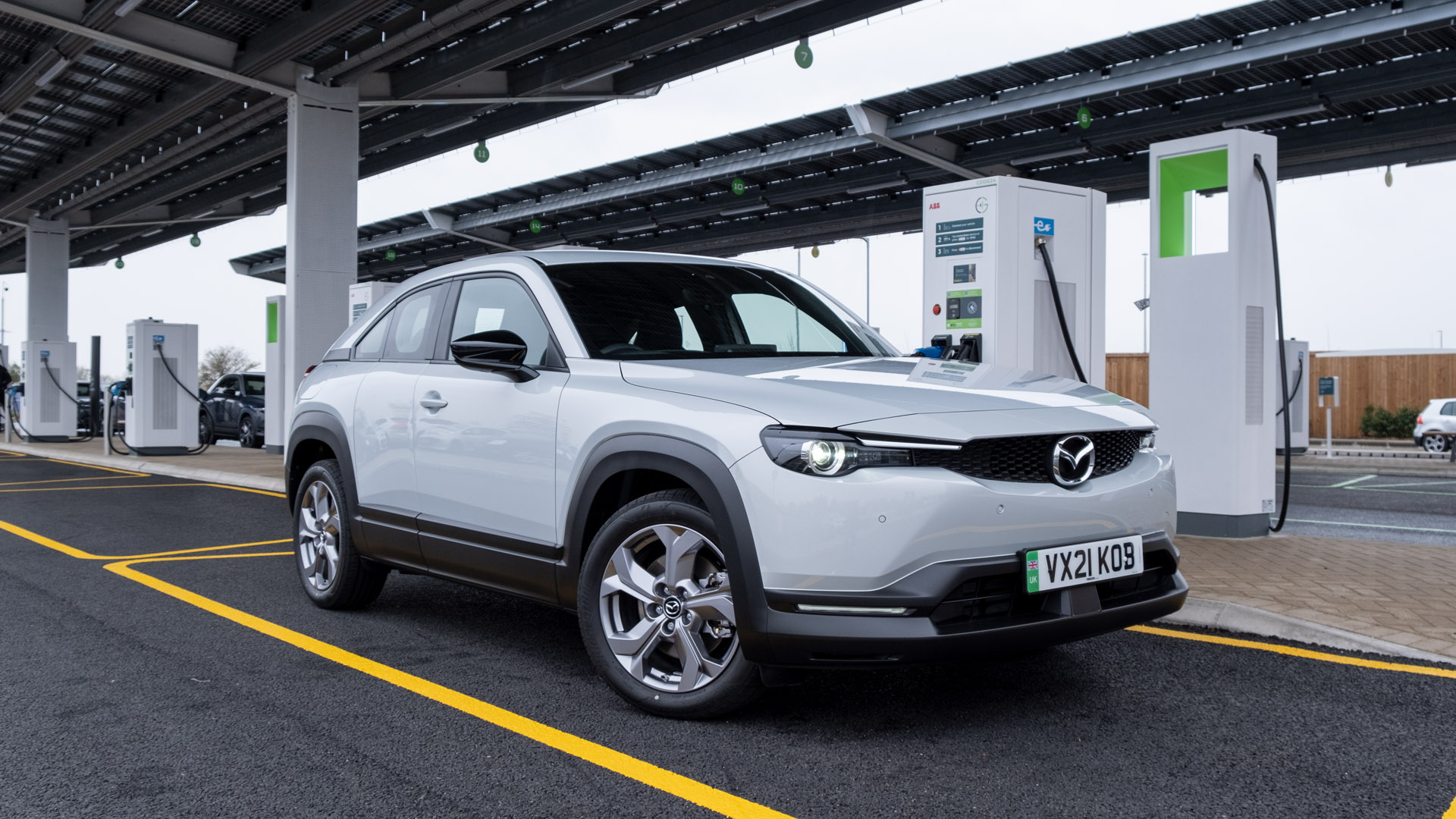
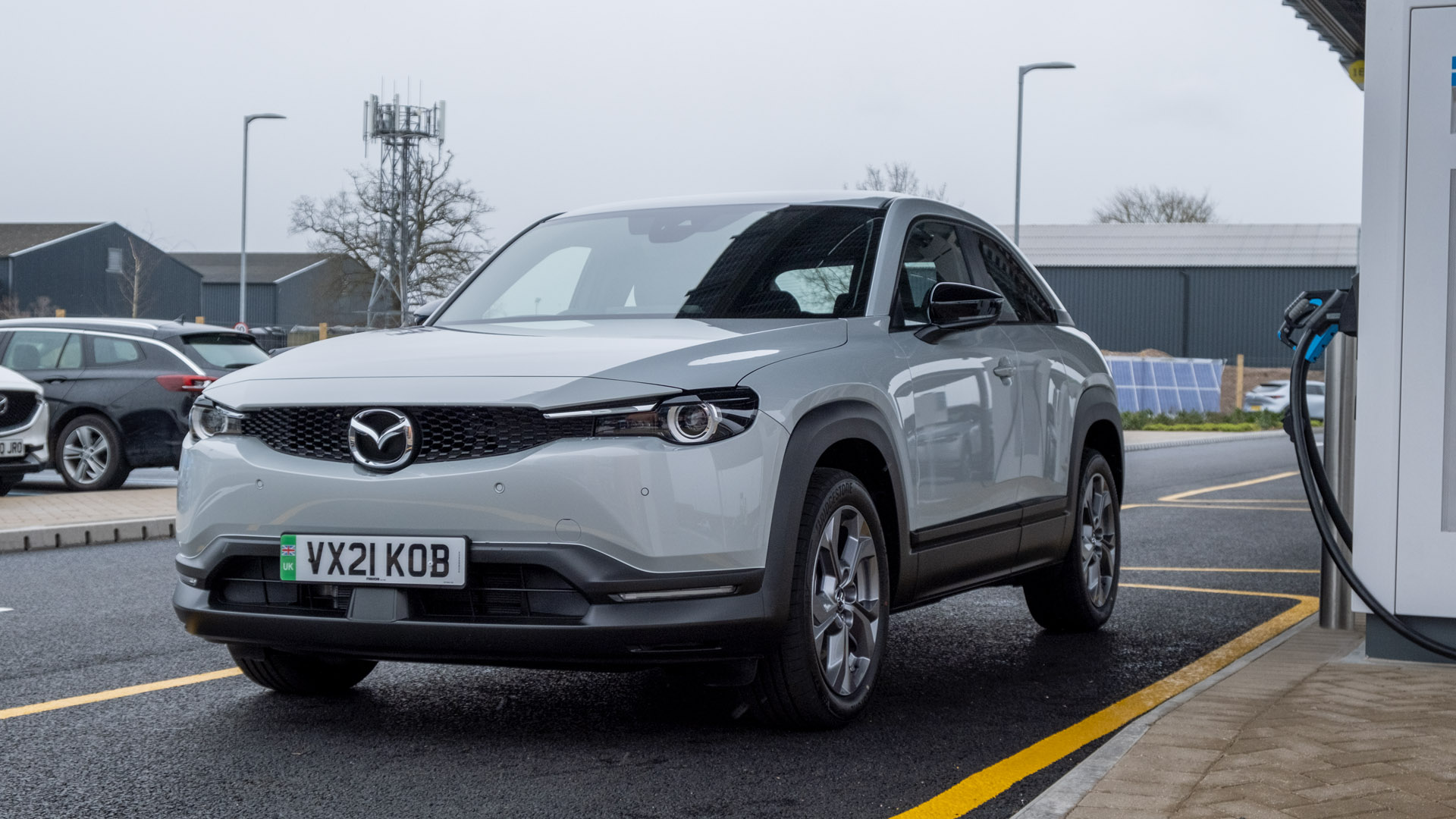
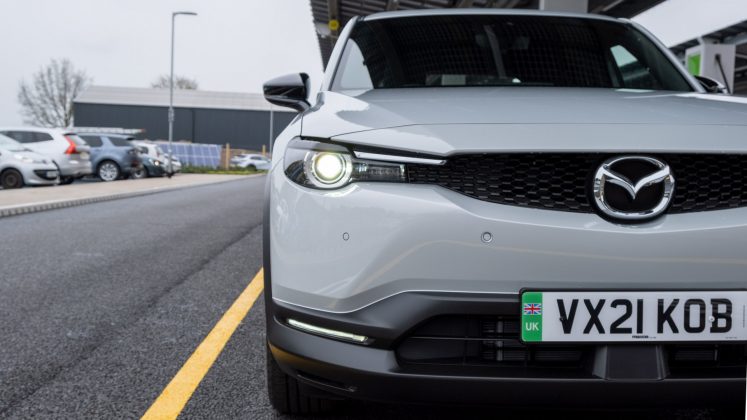
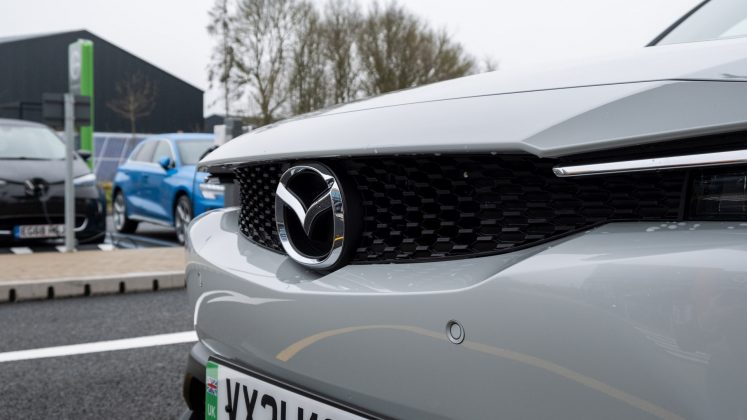
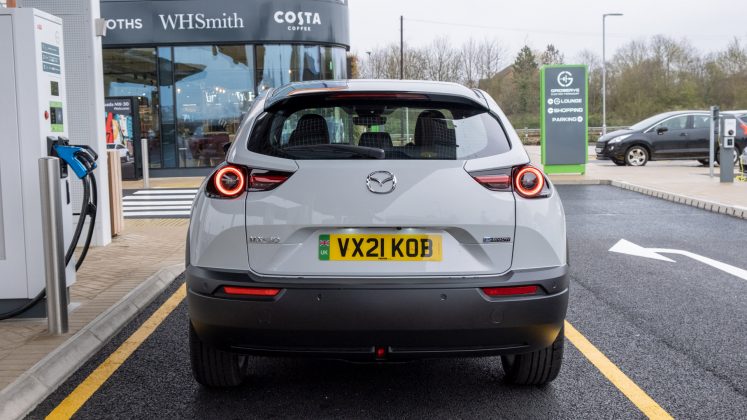
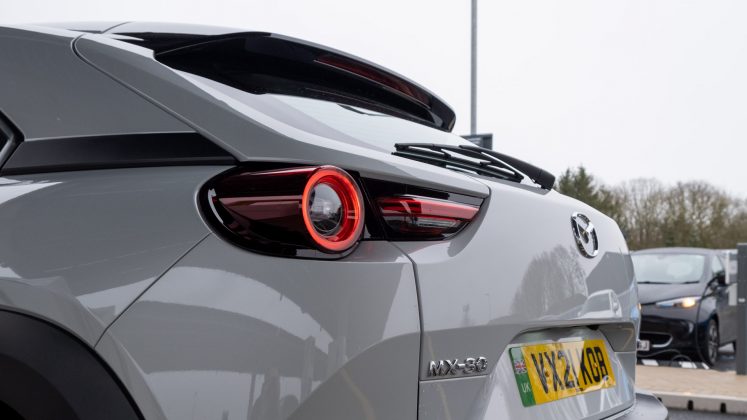

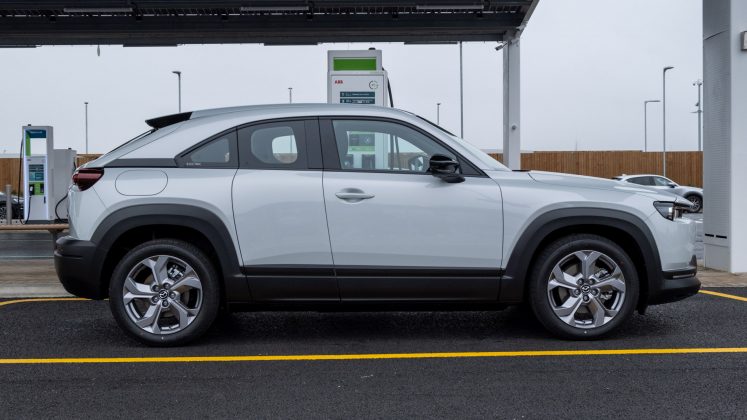
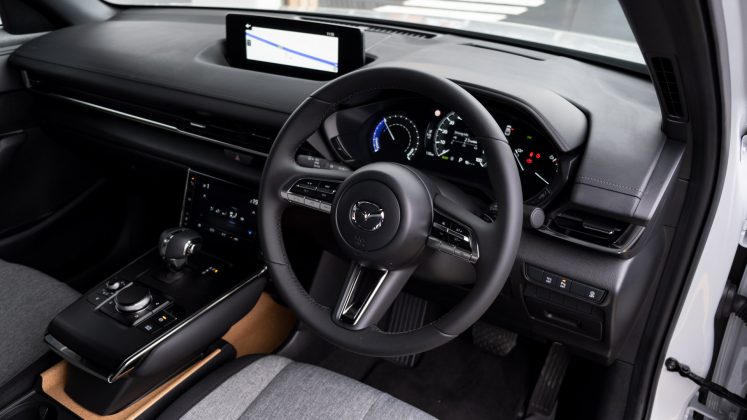
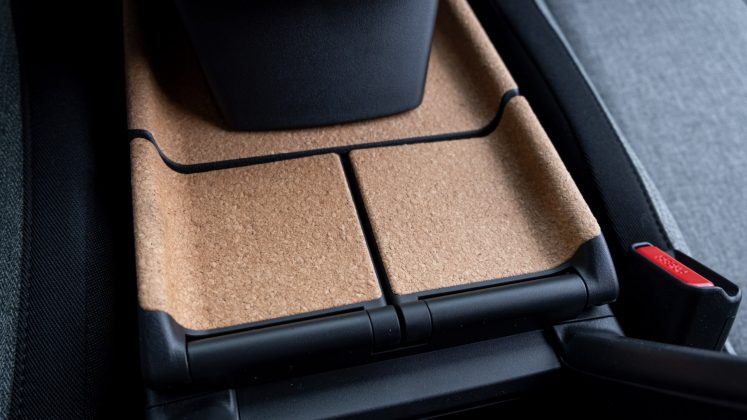
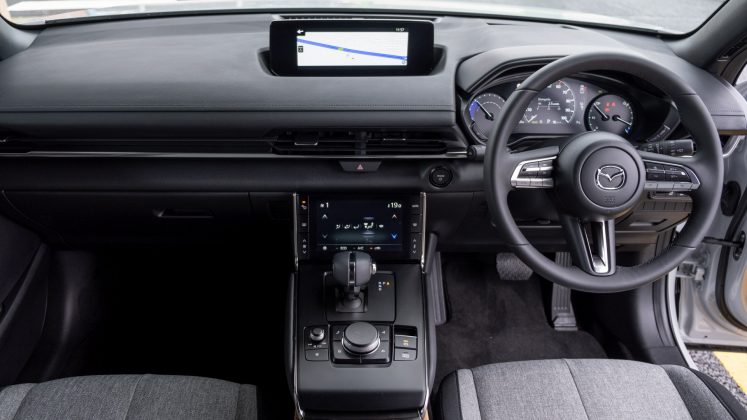
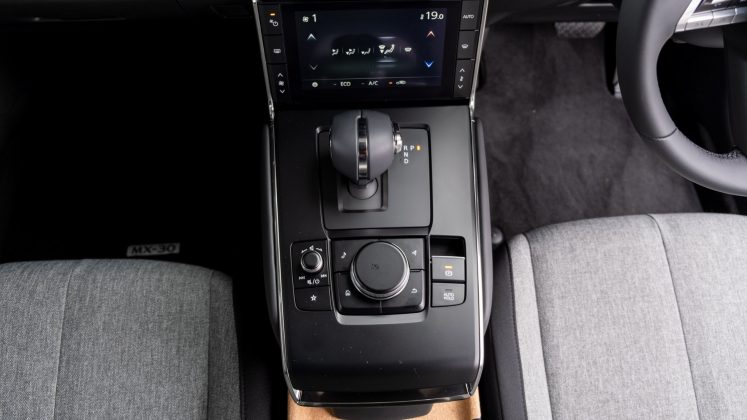
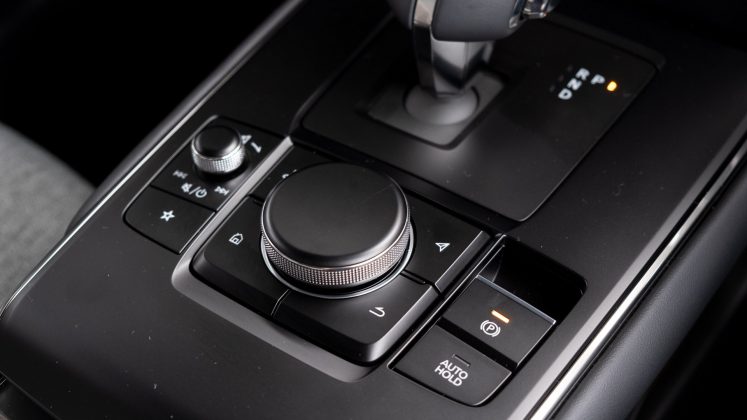
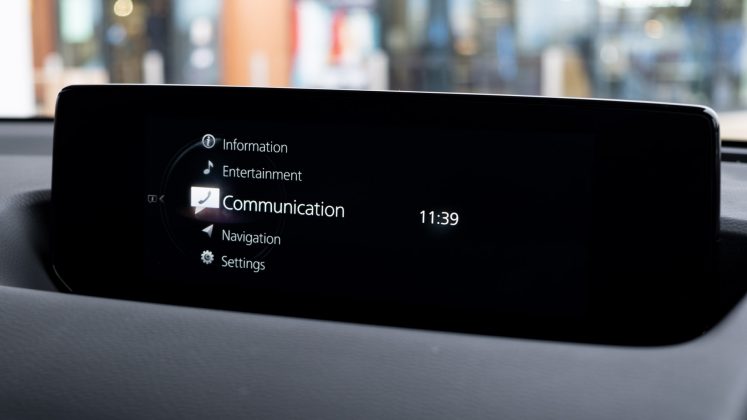
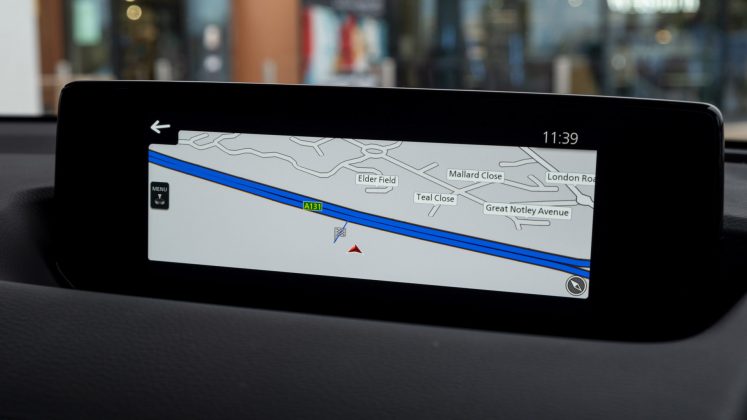
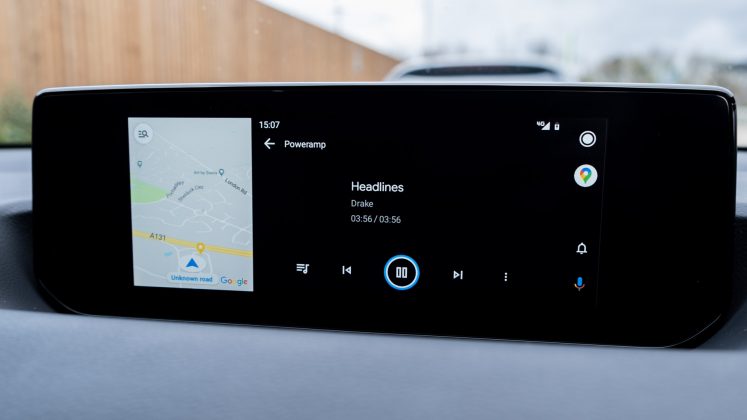
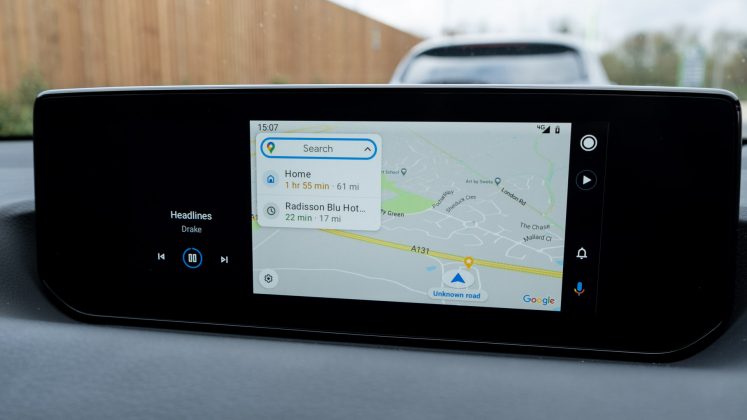
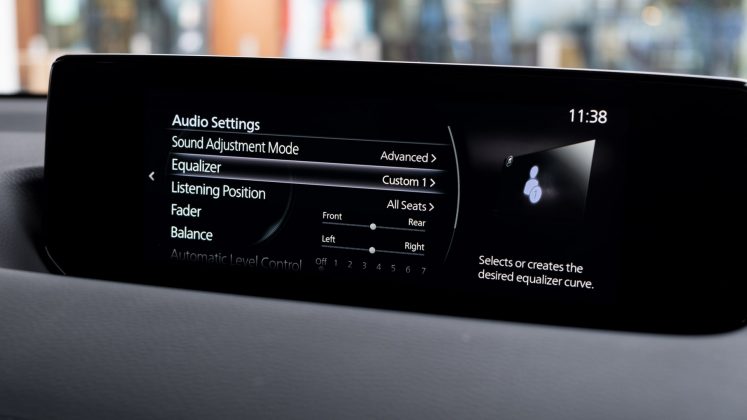
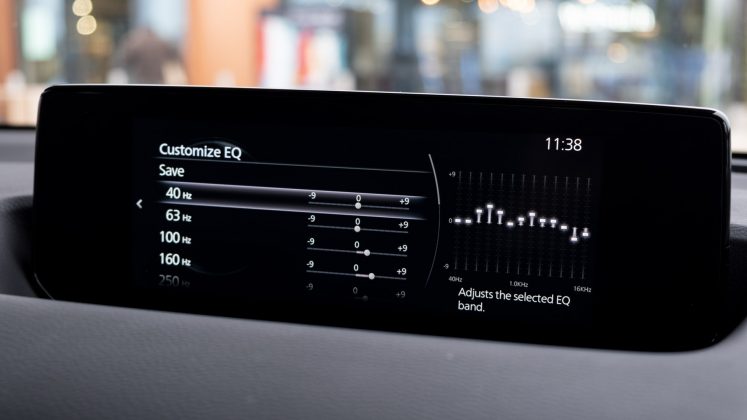
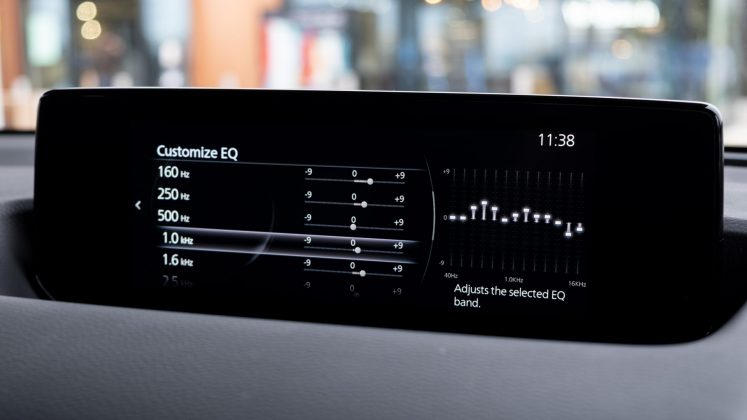

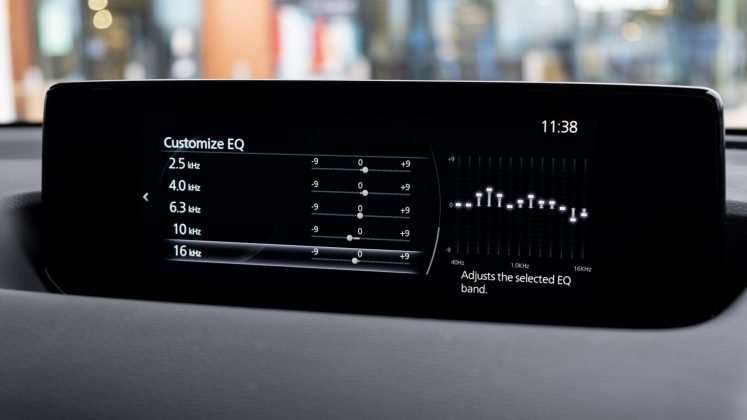
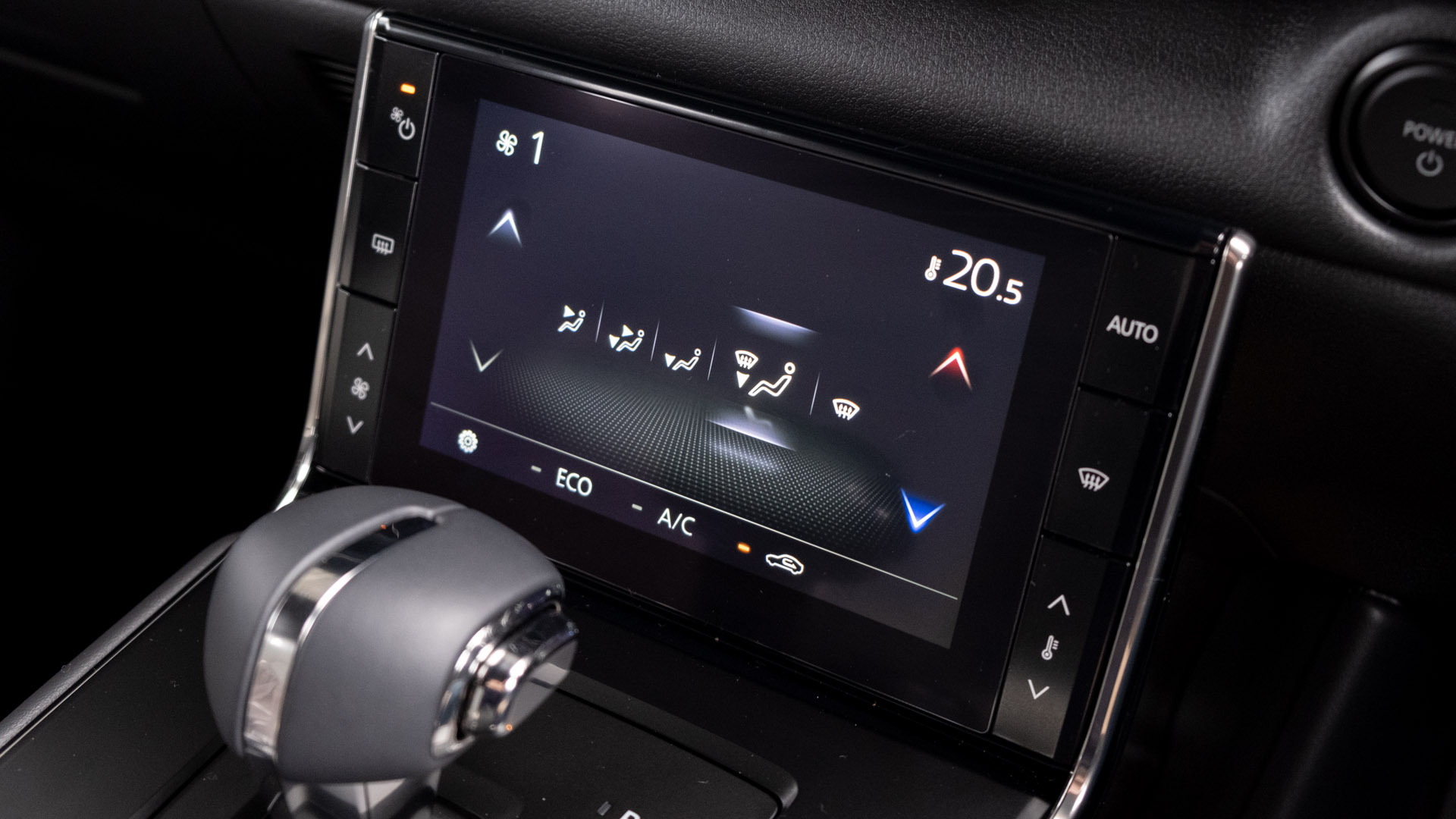
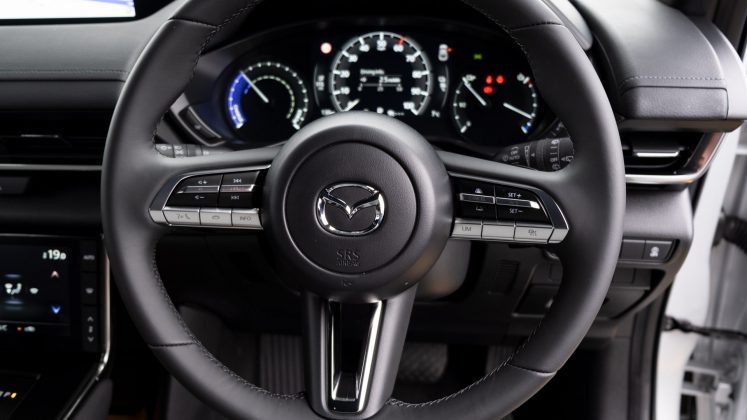
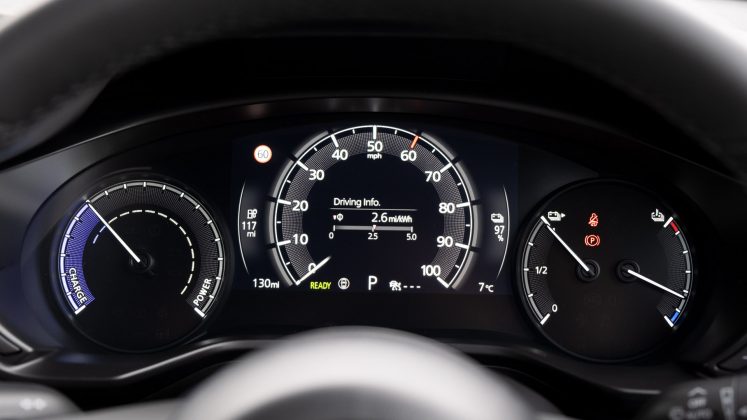
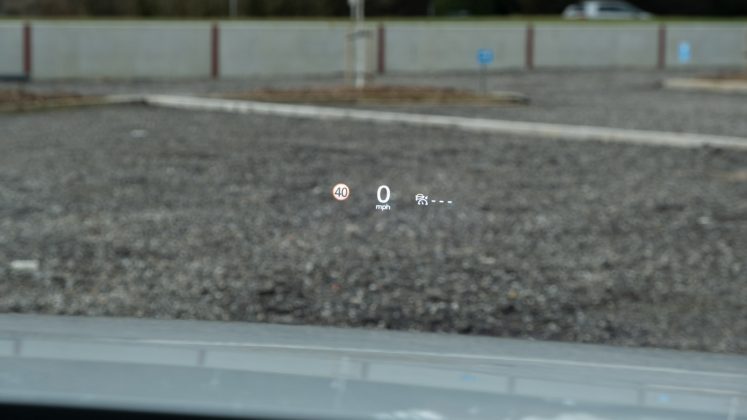

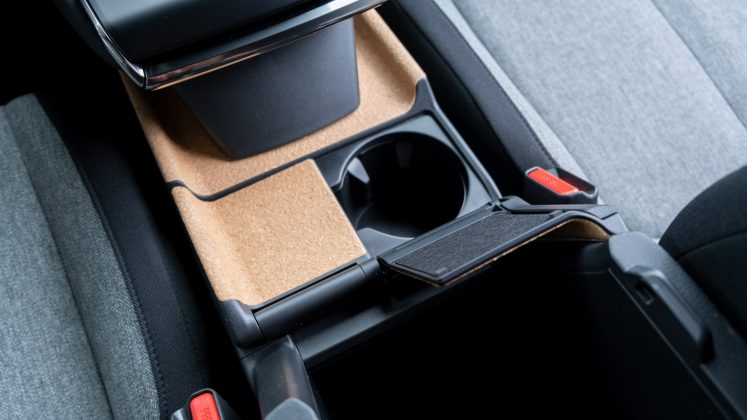
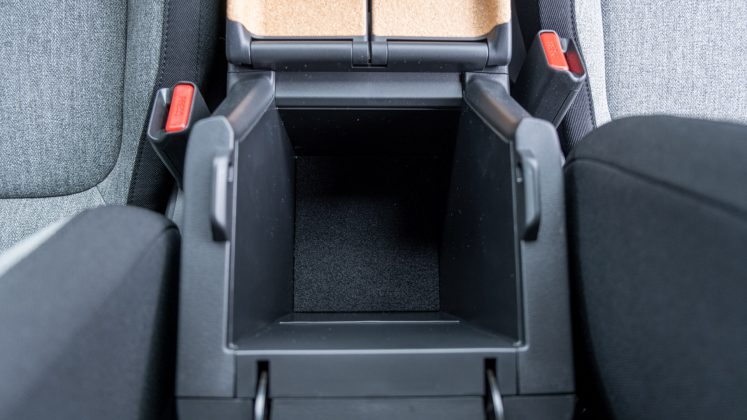
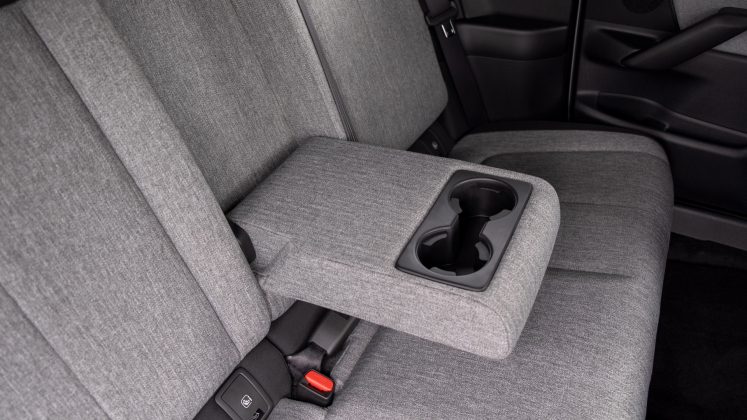
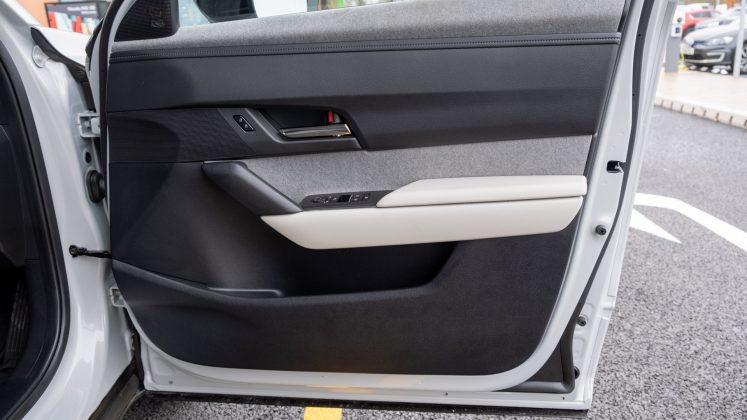
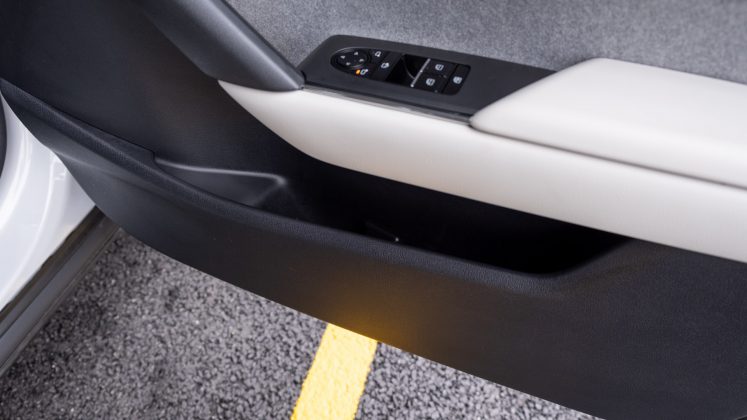
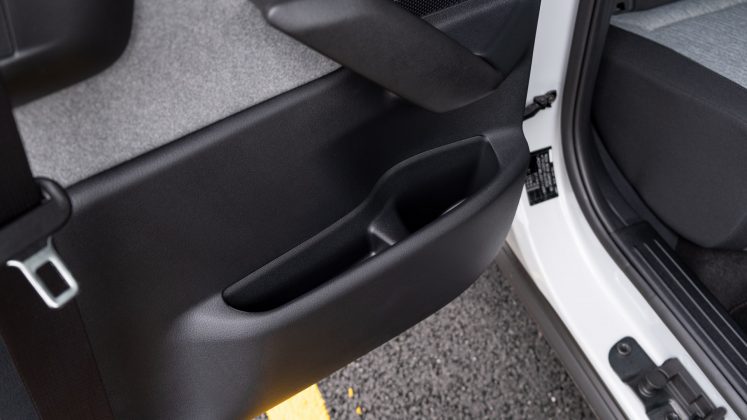
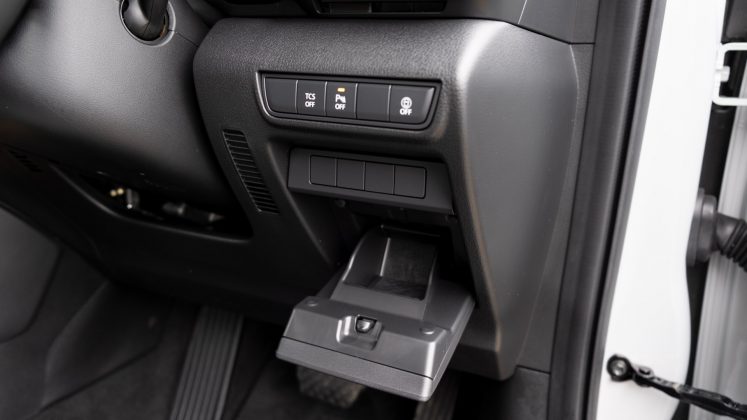
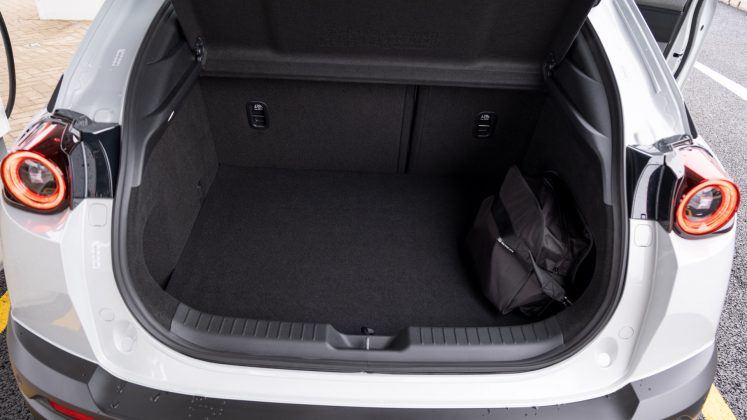
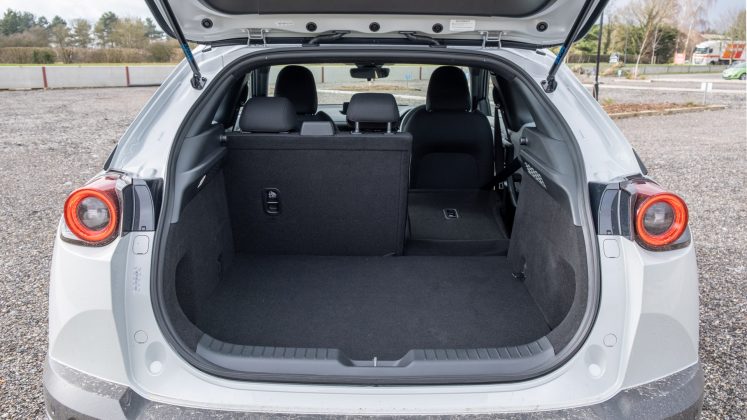
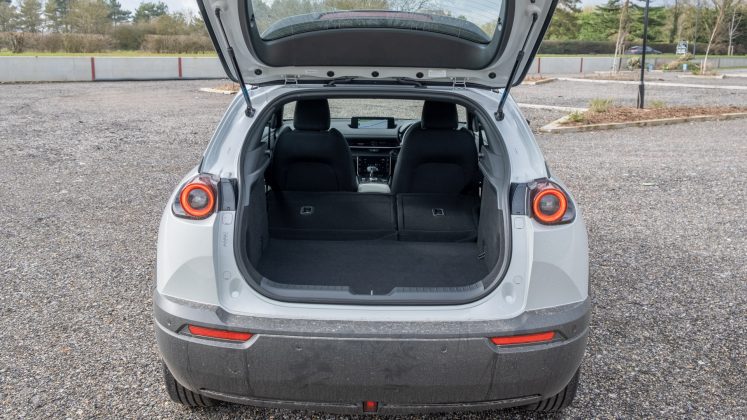
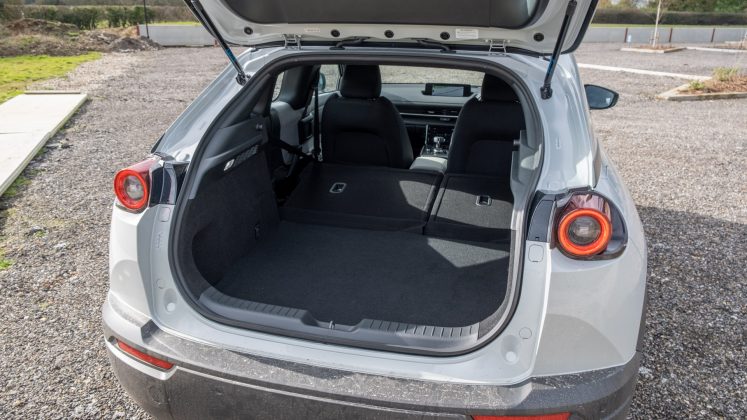
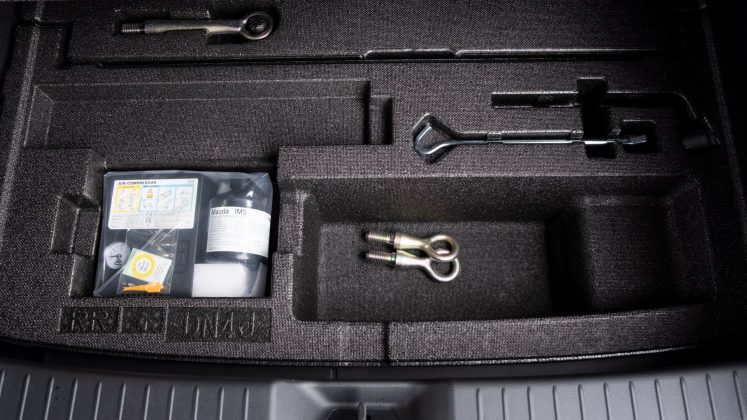
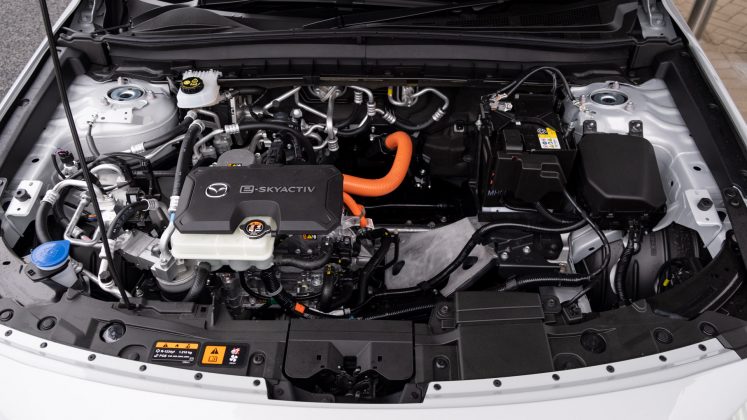
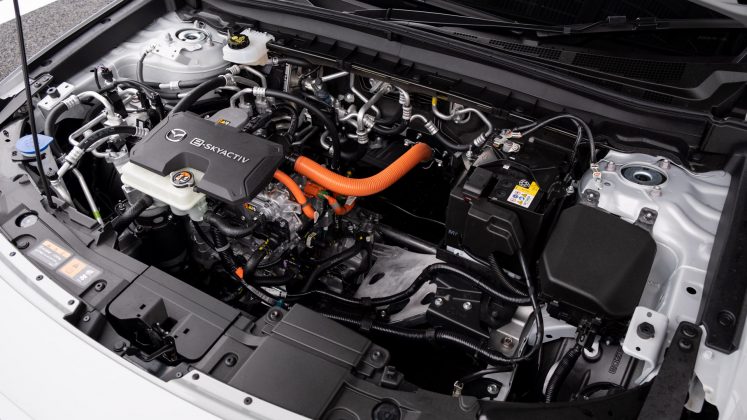
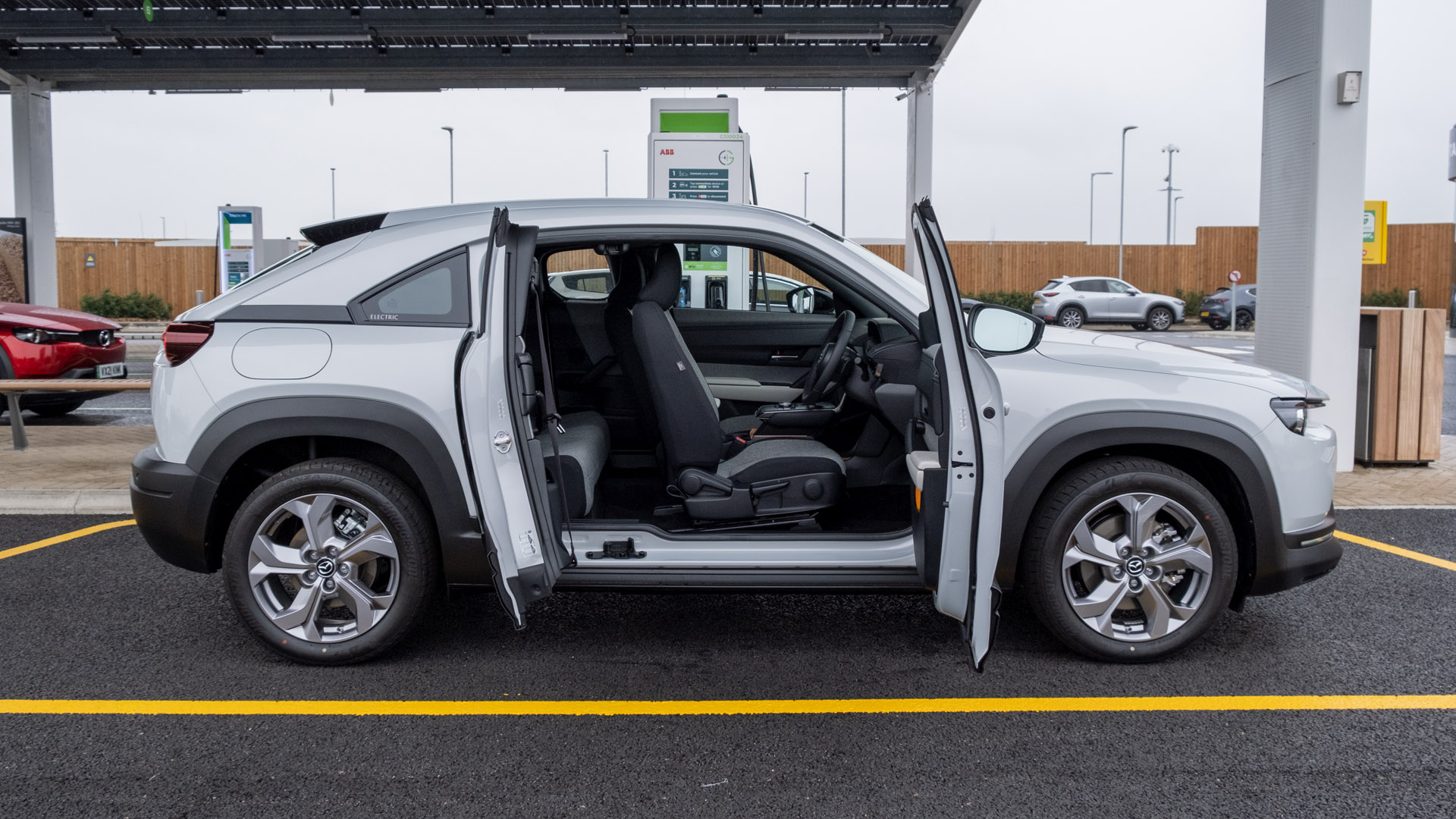
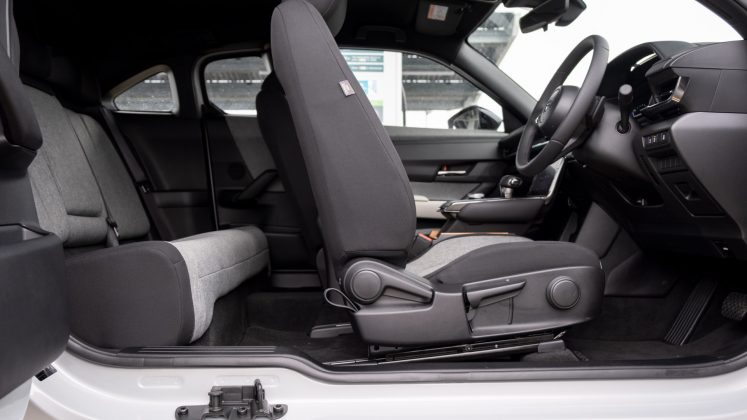
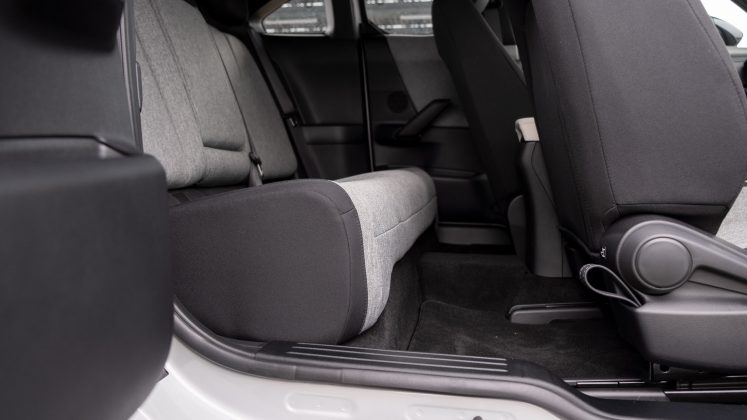
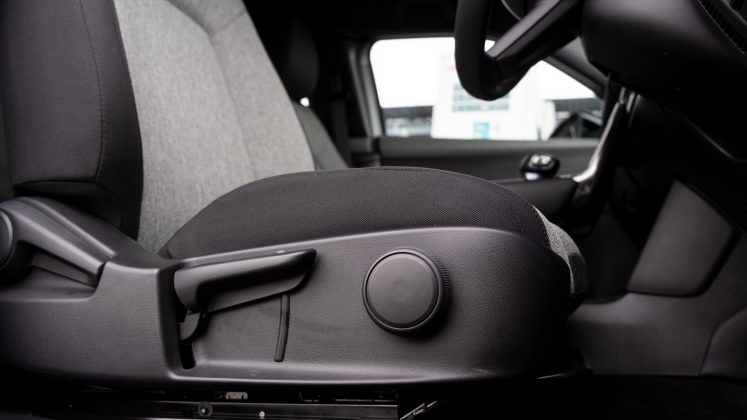
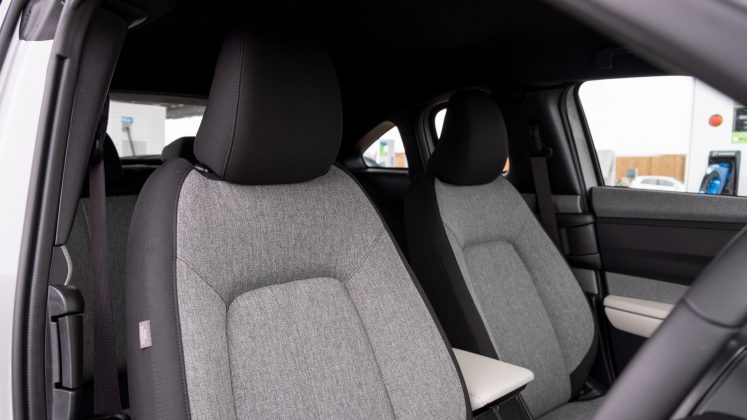
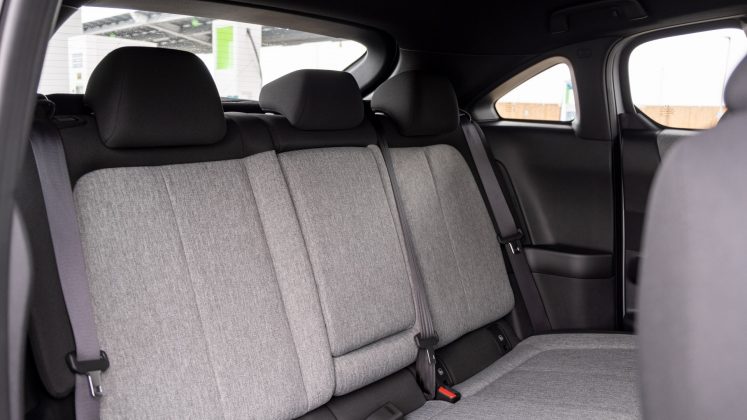
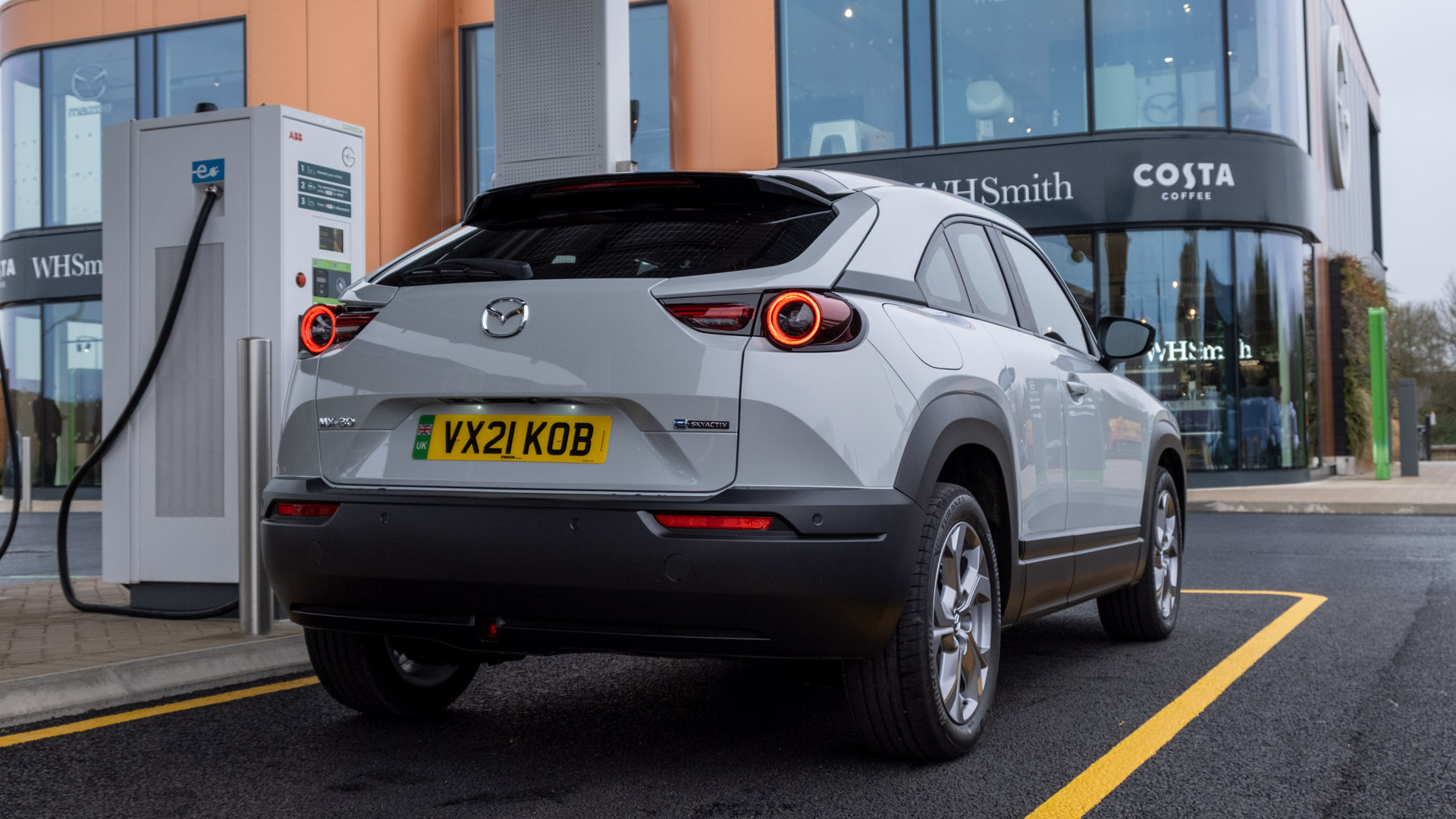
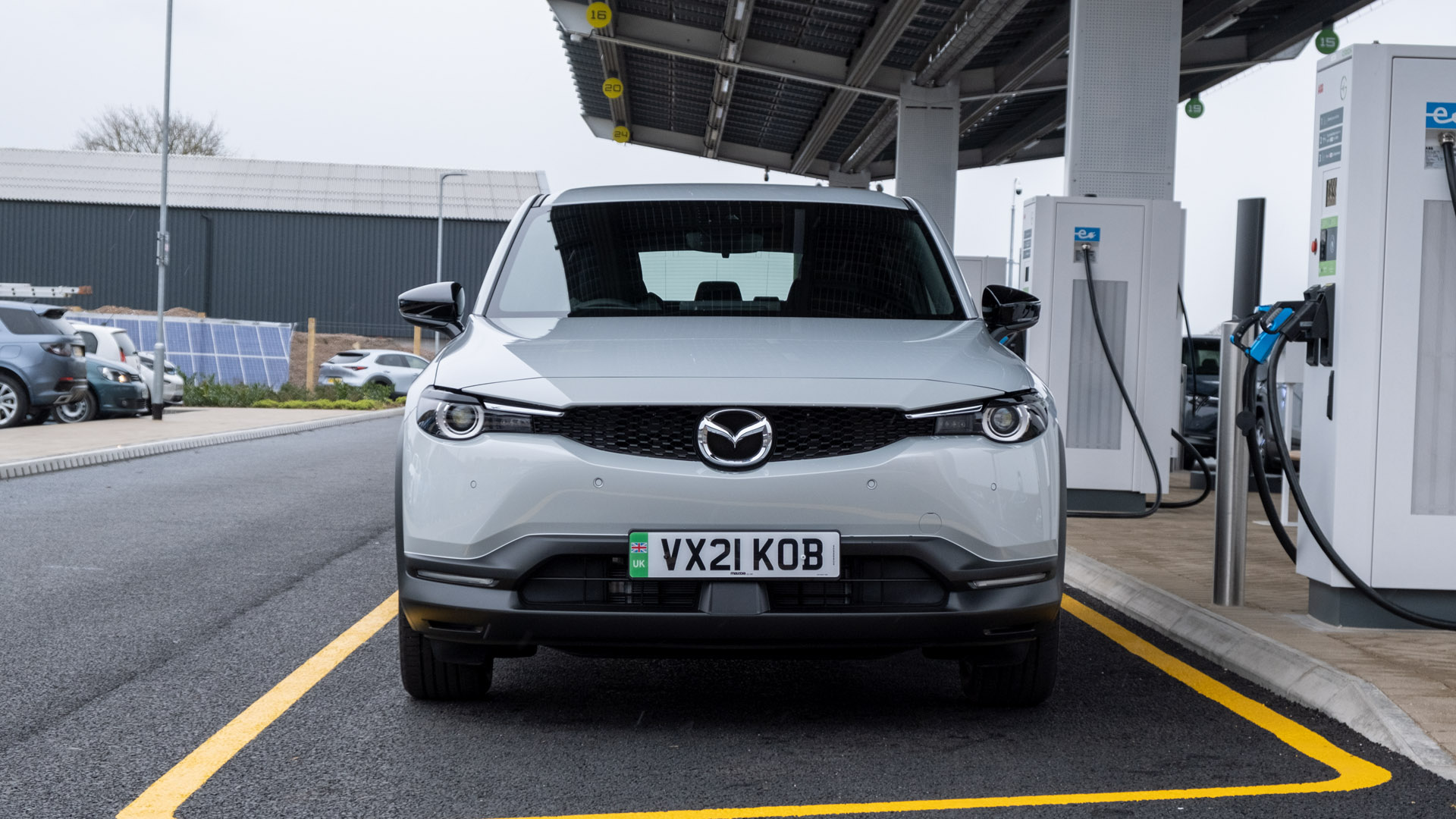
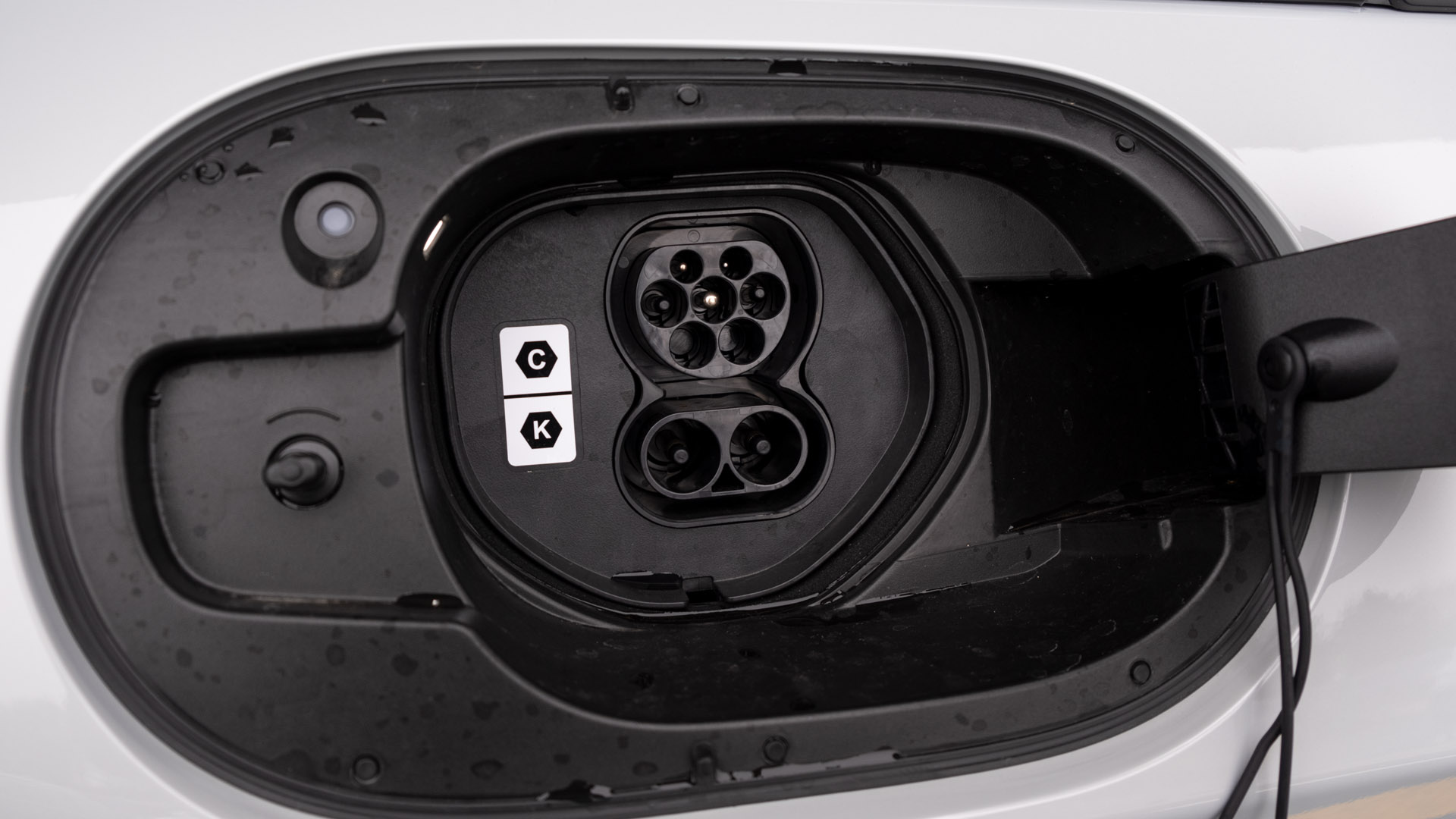
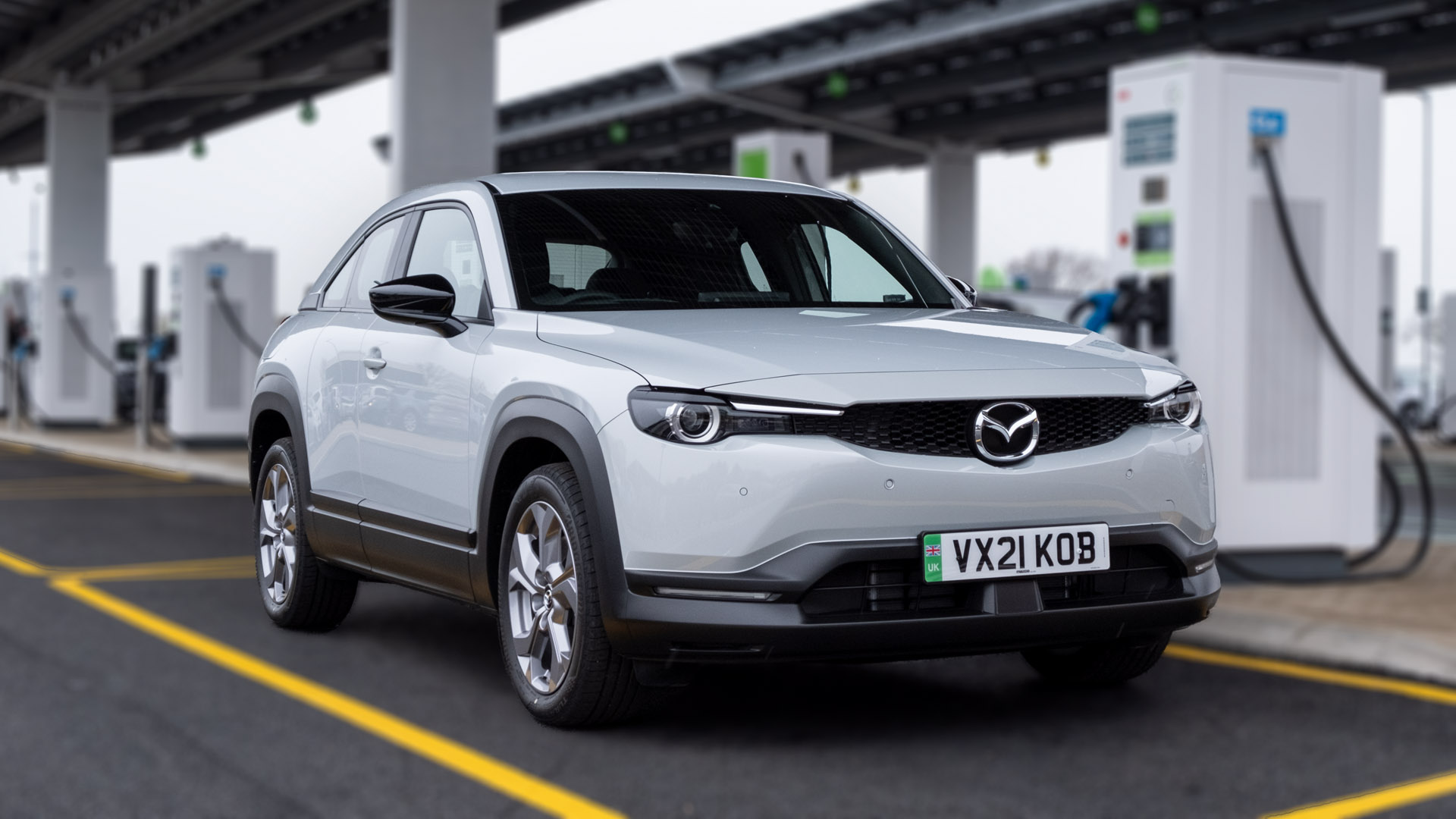




Hi, I am looking at a Mazda mx30 exclusive line this afternoon with a view to deciding whether to have one as my mobility vehicle.
Your review was very informative and even after all the research I had done myself, still gave me information I didn’t know.
It has given me things to consider like the rear door not opening without the front one being opened first. Plus the driving range of only 99 miles. These are definitely things I need to think about before I decide on the car.
Thank you for your honest and thorough review, I am absolutely more informed before going to the dealership this afternoon. 🙂
Hi Becca,
Thank you for the lovely comment, and really pleased to hear that the review was helpful!
I picked mine MX30 Exclusive yesterday with 100 % charged. Battery and predicted 100 mile range on the clock. Chose to drive it eleven miles home in heavy city traffic rather the faster but 20 mile largely motorway option. Lovely to drive and the predicted range kept slowly but surely creeping up all the way. Today on checking its 90 % charged and predicted range is 112 miles (118 miles at its highest yesterday). As I only do less than 5,000 miles in three years across the city where I live doubt that range is going to be an issue. Driving this in heavy city traffic is no problem, rather very comfortable.
Thanks for sharing!